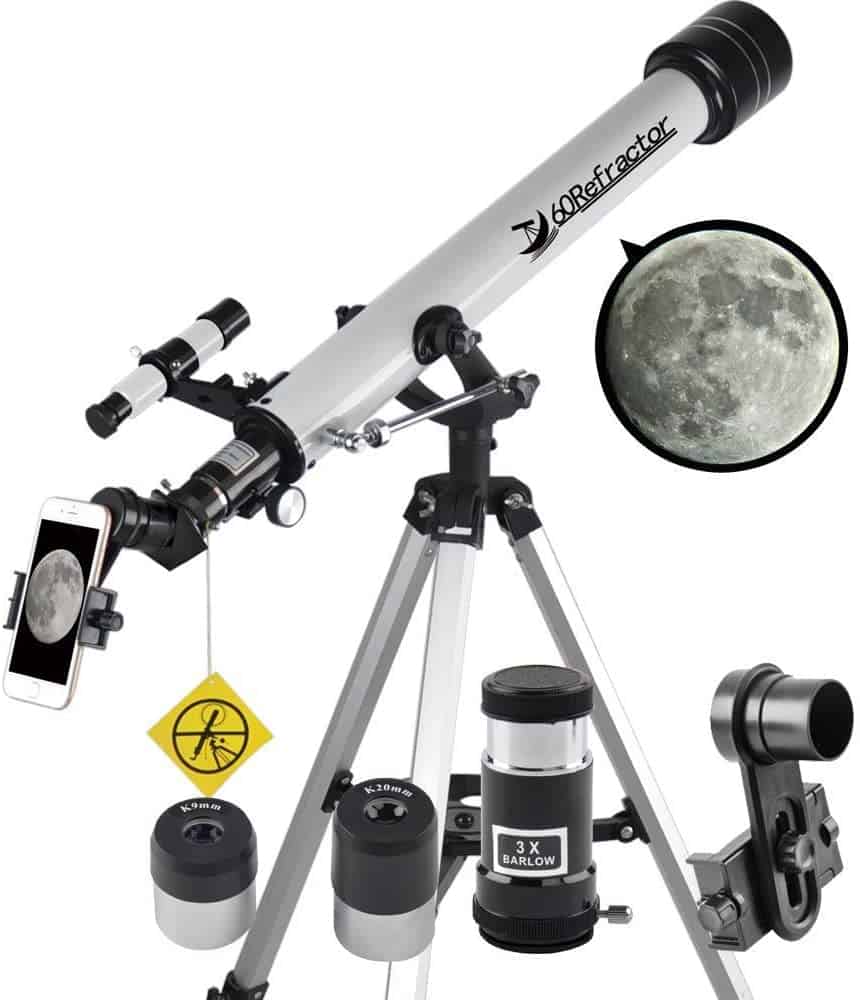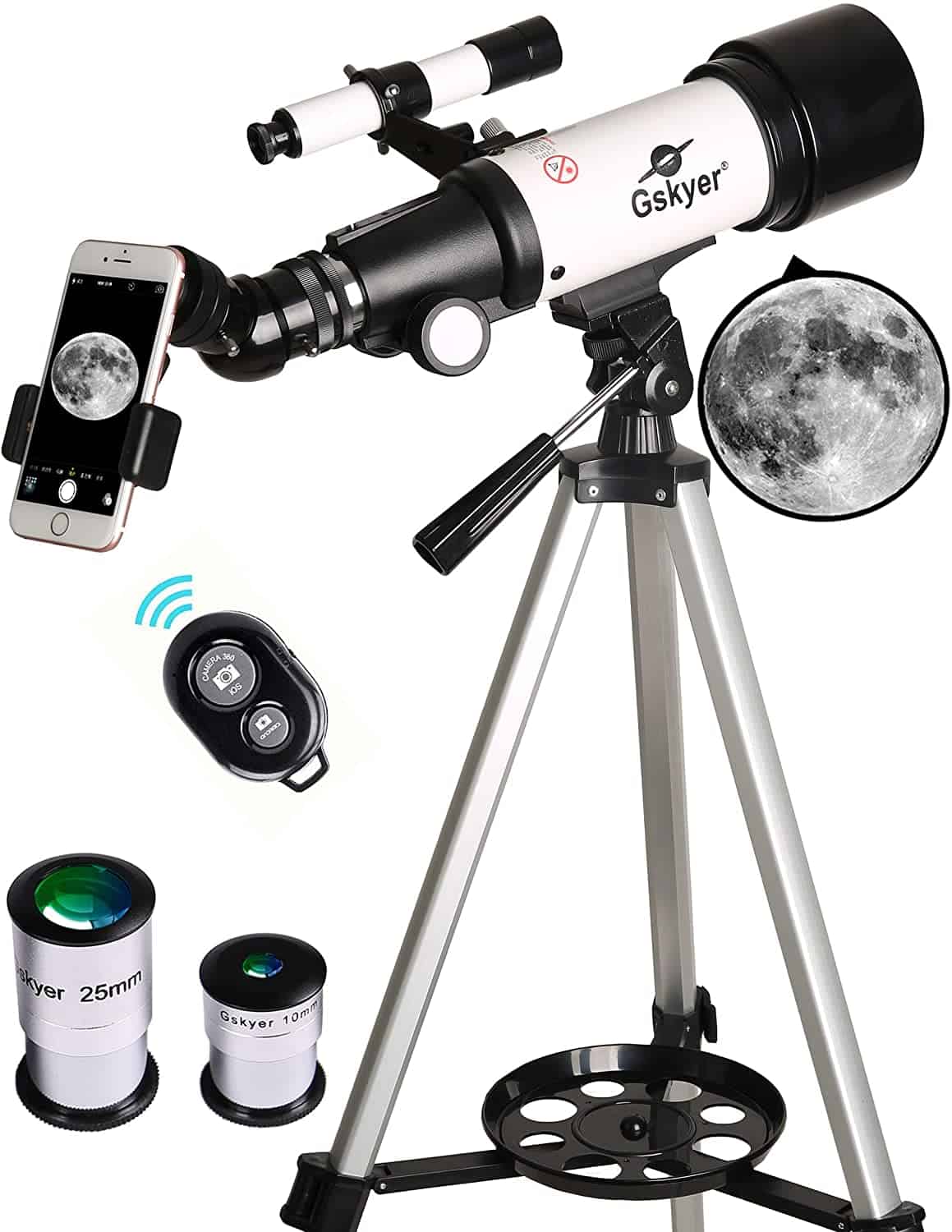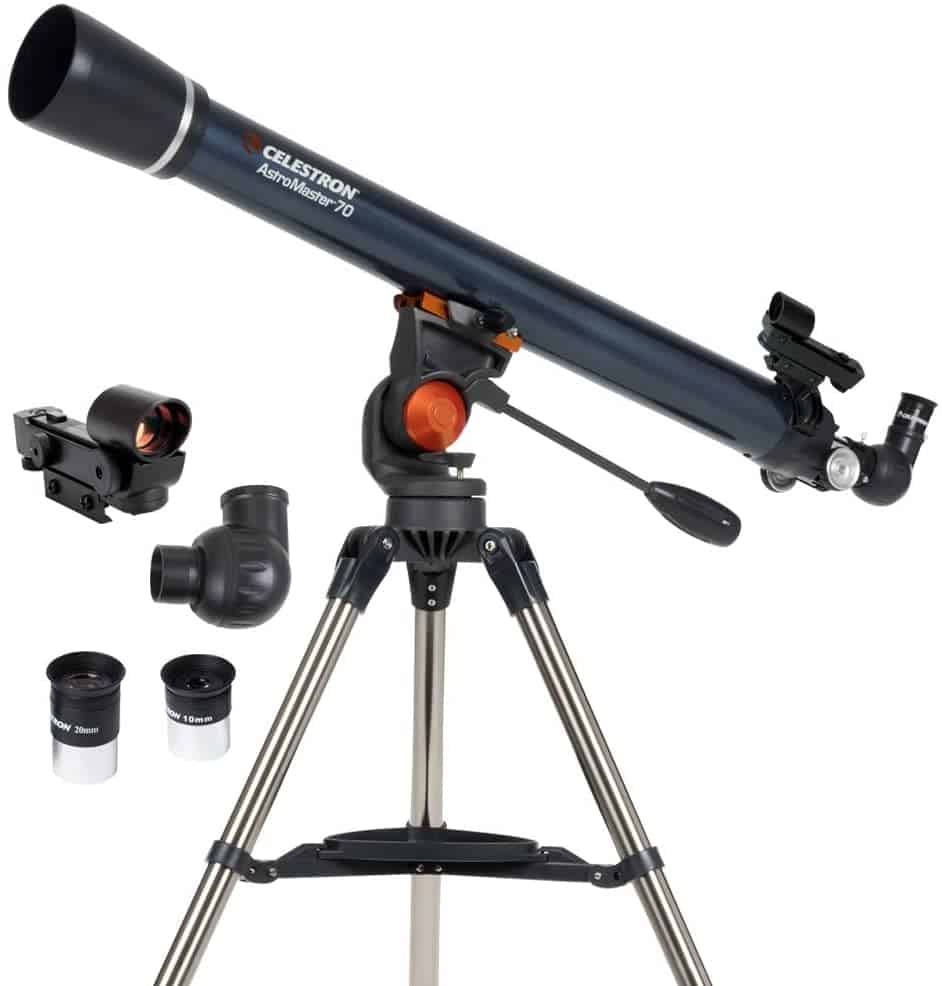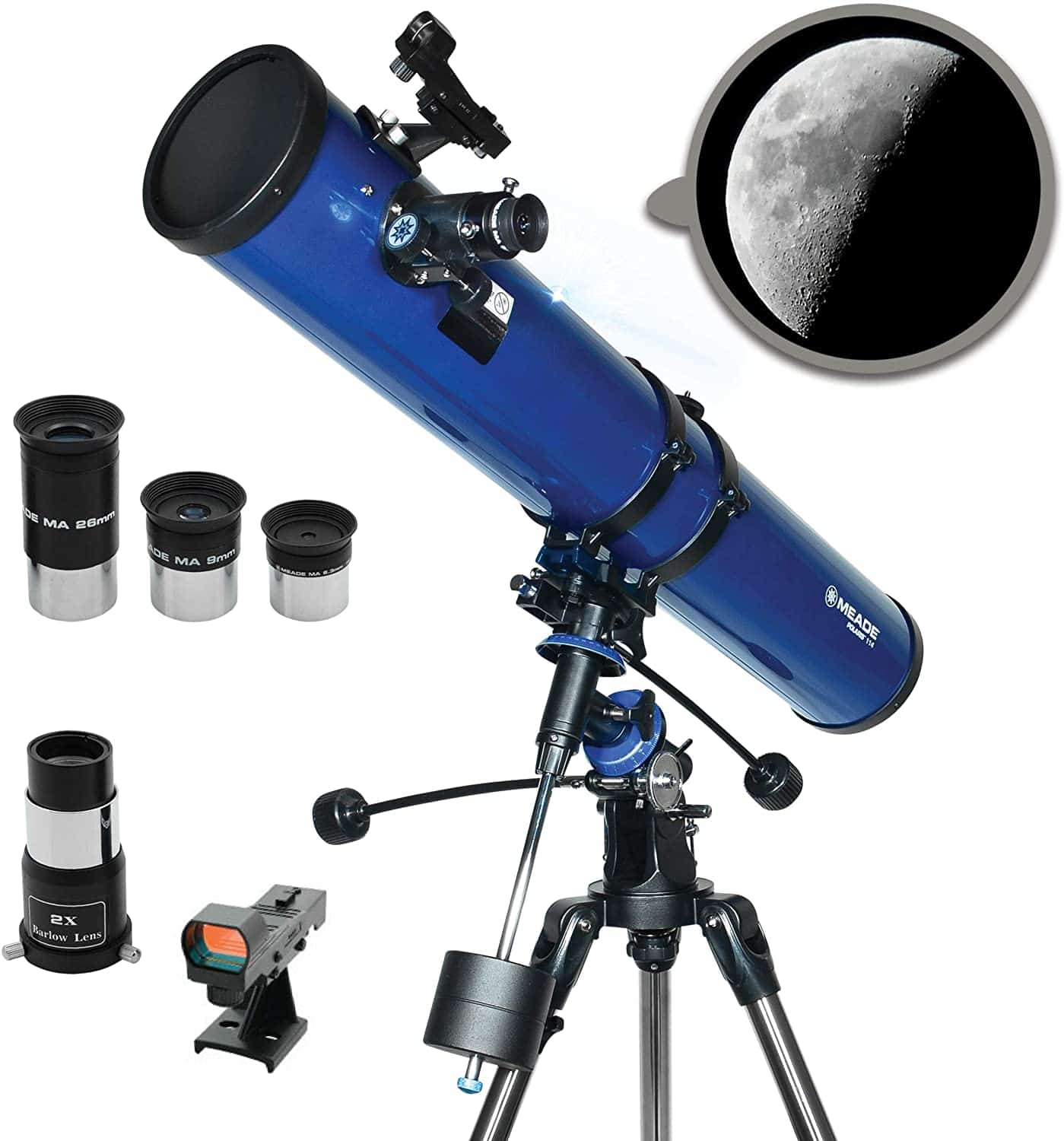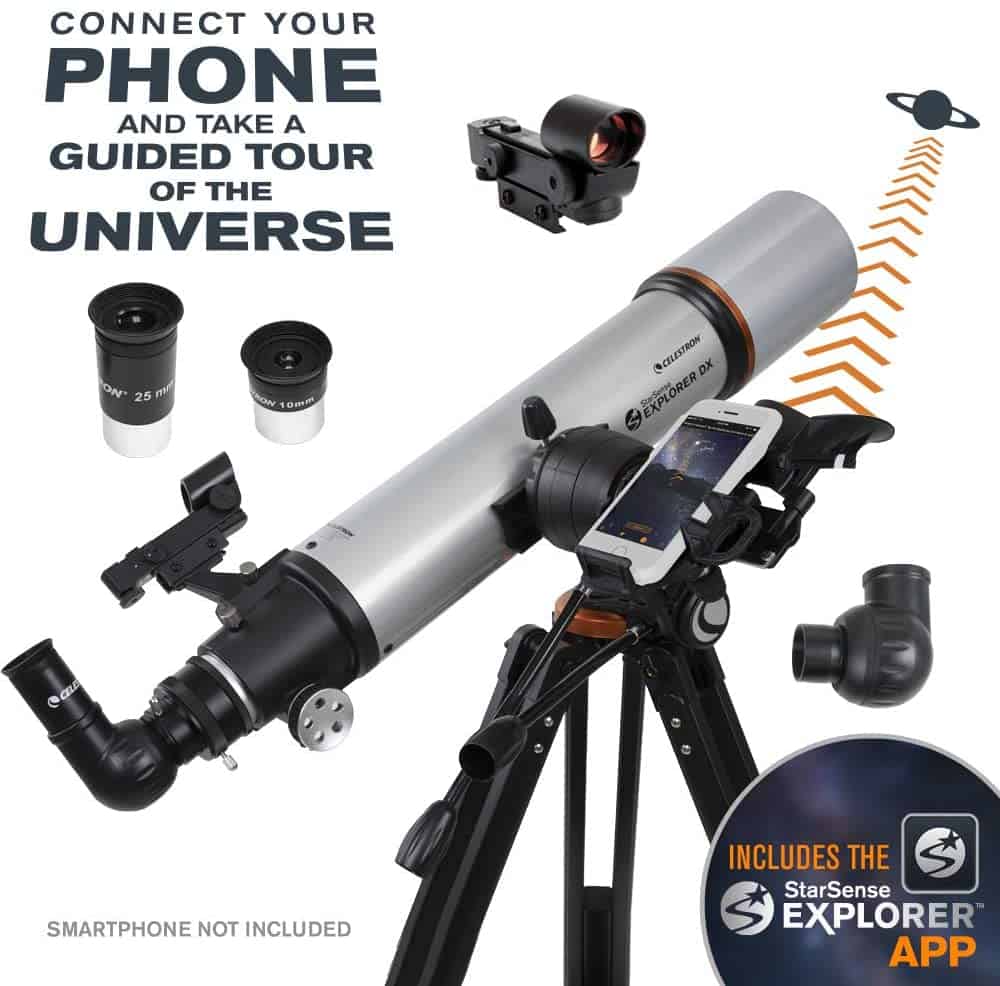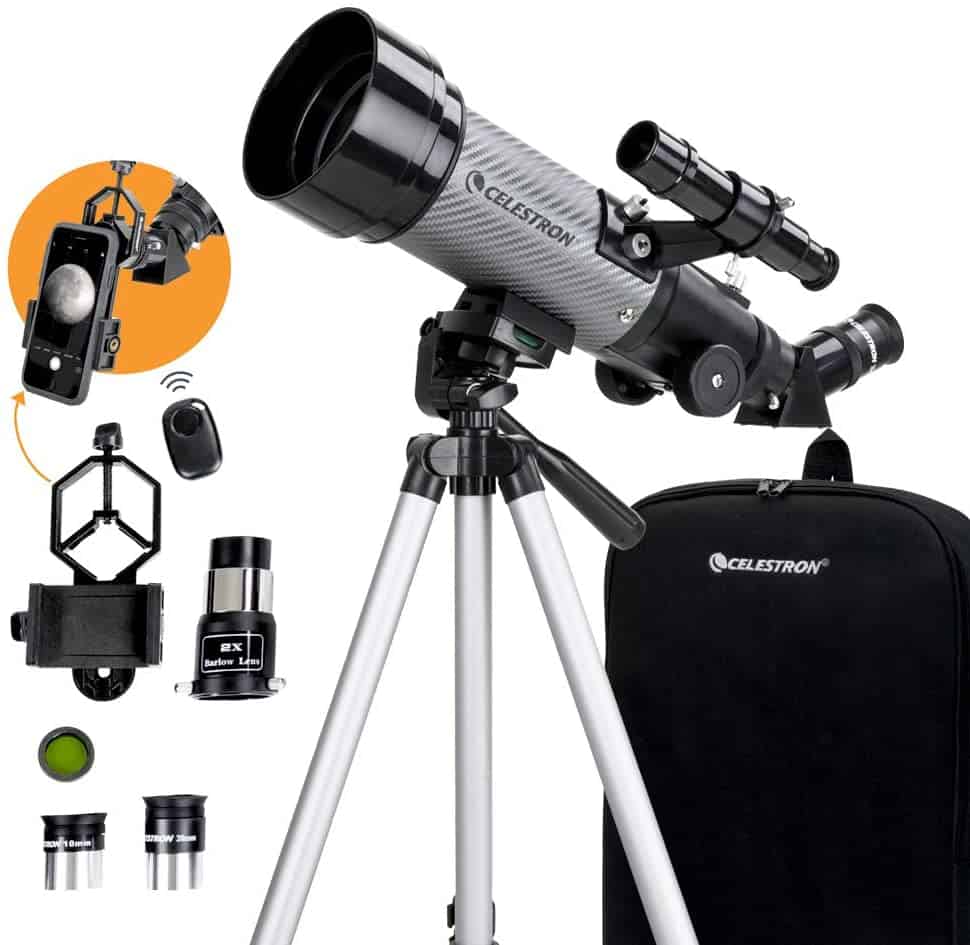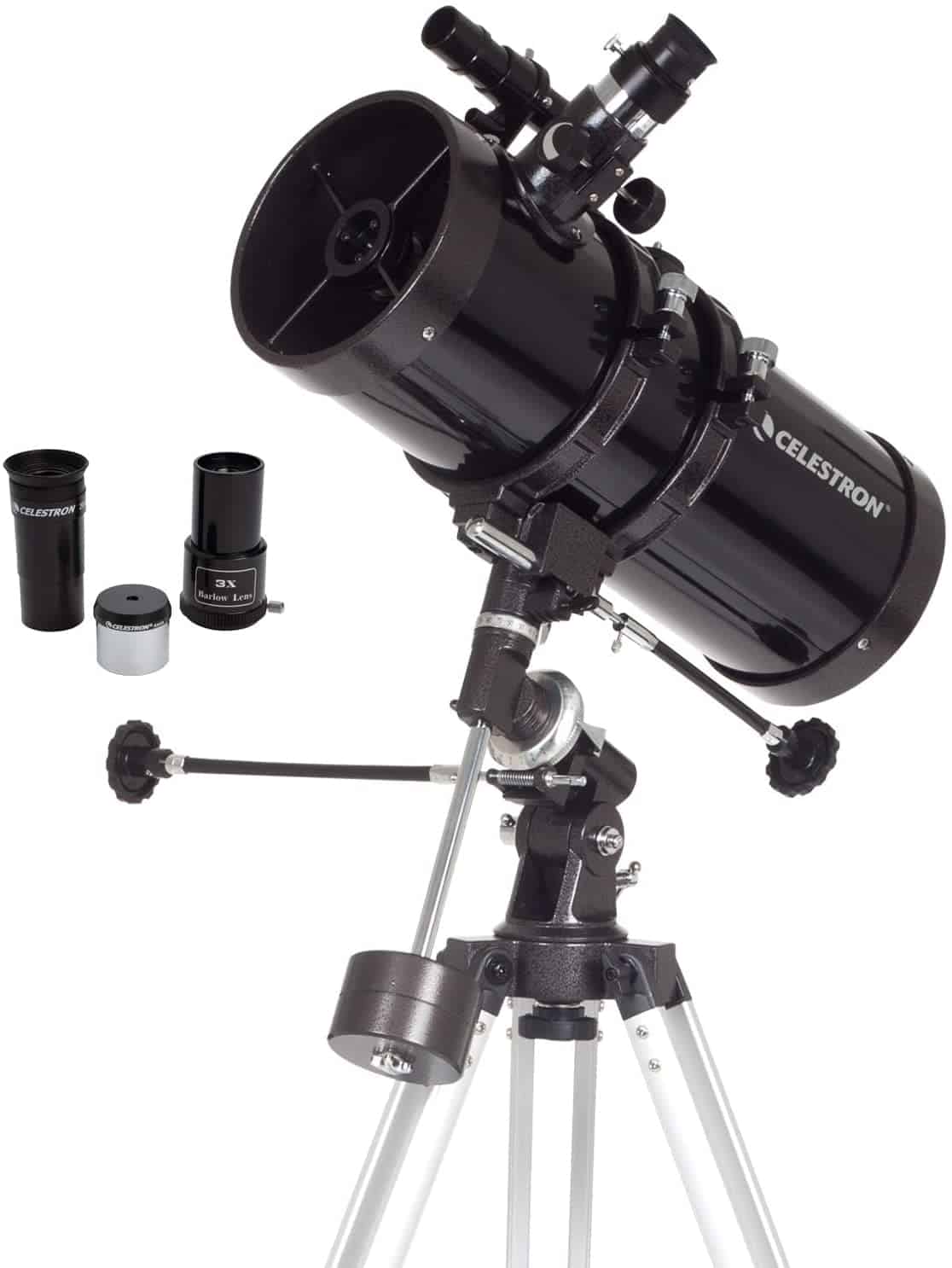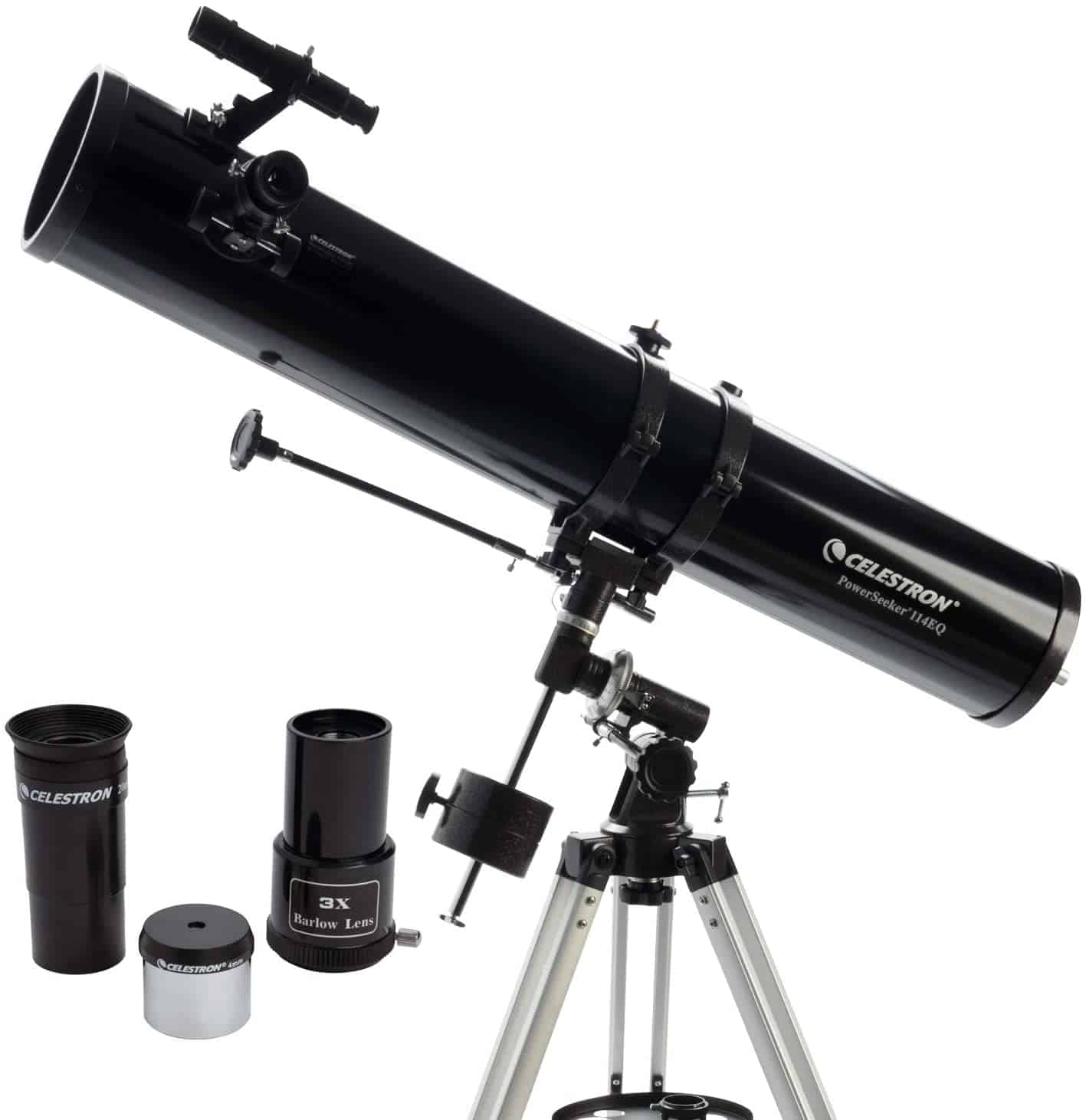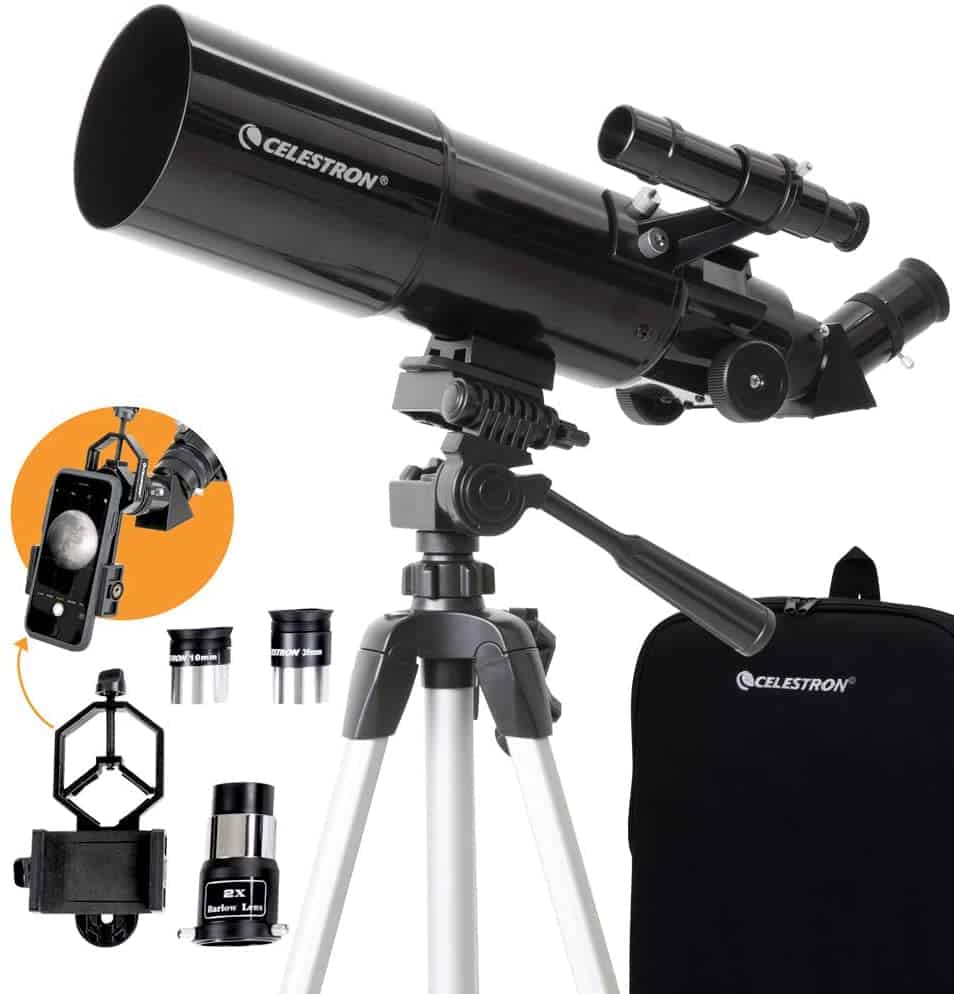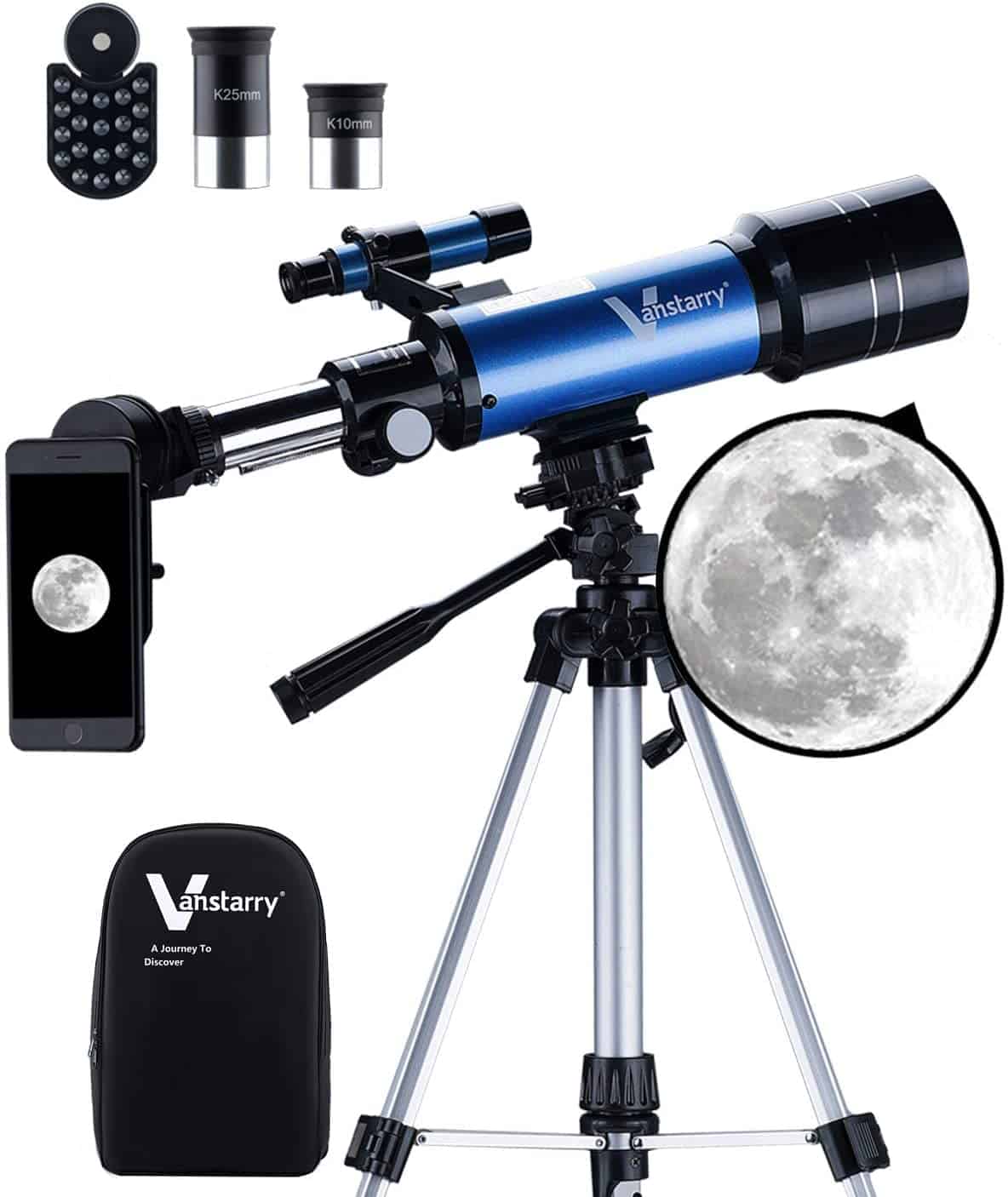Want to explore the mysteries present in the sky and know more about the planets and stars blinking brightly up there in the sky? Looking for the best telescope to see planets? You have come to the right place!
There is an innumerable number of galaxies beyond ours, which means there is an unlimited number of stars, planets, comets, milky ways, black holes, suns and nebulae that are waiting to be discovered.
Not only these faraway objects are mystical, but they also are magical, in a sense that they are way too different from life as we know on Earth. There are many mysteries regarding space, and a telescope only helps us unravel some of them.
A telescope is a creative device that helps us peek beyond the curtains of skies to soothe our inquisitive brains and give answers to our queries. Even if it is not about solving mysteries, a night out under a starry sky gazing into the outskirts of our planet is magical in itself.
Let's read the reviews of the top 10 best telescopes to see planets and help you choose the best one for you!Our Overall #1 Rated Pick
The AZ 60mm Telescope is an excellent product that works well for beginners as well as professionals. It has very easy-to-use features and will give you a clear, perfect view. The assembly of the telescope is not complicated at all.
The telescope has 700mm focal length and a 5.7 focal ratio. The glass is coated with a multilayer green coating that gives a clear and bright image of the plants and protects your eyes as well. The telescope also comes with a Smartphone Eyepiece adapter that helps to take pictures and make videos of the planets.
The 10 Best Telescopes Comparison Chart
Image | Product Name | Ranking | Price |
|---|---|---|---|
1 4.10 | |||
2 4.60 | |||
3 4.40 | |||
4 4.40 | |||
5 4.20 | |||
6 4.30 | |||
7 4.00 | |||
8 4.10 | |||
9 4.00 | |||
10 4.60 |
The 10 Best Telescopes to See Planets
In this section, we review the Top 10 telescopes to see planets.
The AZ 60mm Telescope is an excellent product that works well for beginners as well as professionals. It has very easy-to-use features and will give you a clear, perfect view. The assembly of the telescope is not complicated at all.
The telescope has 700mm focal length and a 5.7 focal ratio. The glass is coated with a multilayer green coating that gives a clear and bright image of the plants and protects your eyes as well. The telescope also comes with a Smartphone Eyepiece adapter that helps to take pictures and make videos of the planets.
Moreover, the stretchable and adjustable tripod is everything you need for viewing planets. It has easy panning adjustments and is made of aluminum. The aluminum tripod is durable and sturdy. You can use the telescope for land viewing along with tracking planets.
It is even perfect for kids and is a great way to get your kids interested in astronomy since it is straightforward to understand and operate.
PROS
CONS
Gskyer is one of the most famous telescope brands available. It will help you learn more about planets, moon, and stars. This Gskyer telescope has a 70mm aperture and a 5.7 focal ratio. The lens is made of fully-optical-coated glass that creates high-quality photos and videos. Moreover, it protects your eyes, as well.
Additionally, the telescope comes with replaceable eyepieces and a Barlow lens. The telescope has a mounting bracket and cross-hair lines inside the glass that helps in locating the planets quickly. If you are planning to go to the countryside for land viewing and stargazing, then this telescope is travel-friendly.
The body, accessories, and tripod are lightweight, and you can store all of them effortlessly in the bag that comes along with it. It is the best telescope with a tripod and other essential accessories that are easy to assemble.
You can easily swap the lenses if you want and observe the planets comfortably! In short, this telescope is the best combination of quality and affordability.
PROS
CONS
Celestron AstroMaster is one of the best and famous telescopes. It provides the best views of Saturn's rings, Jupiter's Moons, and more. The telescope is known for creating clear and high-quality sky images in both day and night.
The Celestron 70AZ is a powerful telescope and is user-friendly. It has fully coated optical glass lenses that provide high-quality images of celestial objects. The telescope comes with an adjustable tripod that is sturdy yet lightweight. It is easy to assemble and store.
You can take it anywhere effortlessly for land viewing or star gazing. The lens has a red dot that helps you to focus on the objects. Moreover, the telescope has smooth panning adjustment and precise pointing.
The setup requires no tools and is very quick. The telescope comes with extra accessories like eyepieces, travel tripod, finder scope, and image star diagonal.
PROS
CONS
The Meade Instruments make one of the finest products in the telescope range. This amazing telescope from Meade has a focal length of 1000mm, and a focal ratio of 8.8. These features help to view the planets very clearly.
You can use this telescope at day and night as well. If you are planning a stargazing trip to the countryside, then this telescope is all you need. It has a sharp focus, is travel-friendly, and is lightweight.
Moreover, the setup is effortless and requires no tools. The telescope comes with extra accessories like magnification eyepieces, Barlow lens, and scope finder. The Barlow lens helps to enhance the magnification power of the eyepiece.
The telescope has a sturdy yet lightweight tripod with an adjustable mount that has slow and smooth movement to track celestial objects. The red dot finder in the lens helps to locate the astronomical object while observing. This is not just it; the telescope comes with DVD instructions and free astronomy software.
PROS
CONS
The Celestron StarSense Explorer is easy to set up and understand. The telescope has a feature that allows you to connect your mobile with it and see the planets and stars by following the arrows. It is compatible with both iPhone and Android.
The assembly is very easy, and you do not need any kind of tools and skills. It is one of a kind telescope that uses smartphone technology to explore the sky. You can easily locate planets, moon, and far away stars with it and calculate their positions in real-time.
The app that comes with this telescope creates a list of planets, stars, galaxies, and other deep sky objects for you to select and locate. The tripod has an easy to move altazimuth mount with smooth and precise motion controls.
Moreover, the lens has XTL optical coating, and a large aperture allows more light to pass through, which results in bright photos and videos.
PROS
CONS
The Celestron 70mm telescope is a very convenient telescope to use. It is easy to assemble and is travel-friendly. If you are planning to go on stargazing trips or just want to watch planets from the safety of your backyard, then this telescope will be one of the best things with you on the trip.
It is a splendid telescope for beginners and hobbyist astronomers who want to enhance their astronomical knowledge. The telescope has a 2.7-inch aperture and a 70mm refractor. It also comes with extra eyepieces that give a boost to the magnification power of the lens.
Moreover, this telescope comes with a complete instruction guide and Sky X software that helps you explore the sky. The large aperture provides the users with bright and clear images of faraway celestial objects like stars, moon, planets, galaxies, and more.
PROS
CONS
Set out on your journey into the mysteries of the Universe with the Celestron PowerSeeker. The Telescope offers the best features to its users and has become one of the famous travel-friendly telescopes in the market.
It is easy to assemble and use. You do not need any high-end tools to assemble the telescope. It is an exceptional combination of quality, power, and value. The tripod comes with a manual mount to make your viewing easier.
It has a very smooth and precise movement, and you can adjust the rod in any desired position. The design of the telescope is compact, and it is very easy to carry around. You can easily take it with you on countryside trips for stargazing and locating celestial objects.
The telescope comes with useful accessories such as two eyepieces and a Barlow lens that will help to magnify the eyepiece power. Moreover, the users can download the Bonus Starry Night Astronomy Software for further help.
PROS
CONS
This is another great telescope from Celestron. The Telescope provides the best features to its clients and has become one of the well-known and travel-accommodating telescopes in the market.
It is easy to assemble and use. You do not need any skills and complex tools to set it up. It is a wonderful mix of value, force, and worth. The tripod accompanies a manual mount to explore the profound sky objects.
It has a smooth and accurate movement with which you can alter the amount in any ideal position. The design of the telescope is smaller and simple to haul around. You get various accessories as well with this telescope.
PROS
CONS
The Celestron 80mm is a refractor telescope, and it is considered a very decent telescope for both amateurs and professionals. If you are planning to go on outings to observe deep, celestial objects, then this telescope will be a great addition.
It is a marvelous telescope for amateur cosmologists who need to learn more about the Universe and unravel its mysteries. It comes with eyepieces that increase the magnification power of the telescope.
Moreover, it comes with a comprehensive user's manual. The large aperture provides brilliant and bright images of faraway objects such as stars, moon, planets, cosmic systems, and that is just the beginning!
PROS
CONS
The Vanstarry telescope is a 70mm travel scope and is perfect for kids as well as adults. It has a green-coated optical glass, and the frame is lightweight. The telescope has two replaceable eyepieces that have very high magnifying power.
It has a finder scope as well that helps you find planets very easily. The large aperture provides you with a bright and clear image of the planets. The setup of the telescope is easy and quick, and you do not need any complex tools for that.
Moreover, the telescope comes with a backpack and a tripod as well. The tripod is made from high-quality aluminum alloy and is adjustable.
PROS
CONS
Buying Guide
Purchasing a telescope is a really big deal, and there are a lot of specs that need to be considered before you open your wallet and make a deal with a salesman. After careful evaluation of the top best telescope to see planets and the ones that do not empty a person's wallet, we have created a list of features that are vital for a good telescope.
There are explicit details about all the aspects you will need to consider before purchasing this buying guide. Just give it a read, and you will be good to go to buy yourself a top-notch telescope!
Magnification Range
While there are a bunch of planets near the Earth's stratosphere and can be easily viewed with a simple telescope with a smaller focal length, the distant planetary bodies such as Pluto and Uranus cannot be viewed with the help of these simple telescopes.
For a telescope to be able to view and capture clear shots of distant, more mystical planets, the said telescope must have a larger focal length. A focal length of any optical instrument determines the magnification power of the said instrument.
With a greater focal length, you will be able to view distant planetary bodies with ease and will also be able to change the focal length to observe the Earth's closest neighbors.
A focal length is determined by the distance between the center of the objective lens in case of refractor telescopes or primary mirror in case of reflector telescopes and the focal plane where the image of the said observant body is created.
Aperture
A telescope creates a picture of any viewable distant object in space by catching onto reflected light from the surface of those objects. The object in question can be anything that intrigues you and which falls within the magnification range of your telescopes, such as Earth's neighboring planets, nebulae, comets, and stars.
The aperture is the distal end of a telescope that is directed towards the open sky to catch on the light that is being reflected off of surfaces far away from Earth. The curved mirror, in case of reflecting telescopes, and the objective lens in case of refracting telescopes, is the main object that is receiving the light rays and particles to create a picture at the image plane.
The larger the diameter of the objective lens or the curved mirror, the larger the aperture of the telescope will be. If the aperture of the telescope is large, it will be able to absorb more light and hence form a clearer picture.
A typical high-functioning telescope must have at least 70 mm wide or 2.8 inches wide aperture to produce top quality images.
Image Quality
One of the main devils of telescopes is the chromatic and optical aberrations that kick in to distort a perfectly good picture of the mystical world beyond the skies. Chromatic aberrations are the result of the dispersion of different light rays from the focal point or the image plane.
Frequently, the lens is unable to focus all the rays of light being reflected from one surface to a common point, which distorts the image being created at the focal plane. Optical aberrations can be caused by any fault in the geometry of the lens or mirror. If there is any slight change in the curvature, the light will most likely be dispersed, and the image will get distorted.
The quality of the lens and other materials in the spherical tube of a telescope matter the most in terms of image quality. Be sure to check out the details of the focal plane and curvature of the lens, if you do not want to observe the outer space with one or two missing colors from the image.
Portability
A telescope must be able to turn itself into a compact device that can be either opened up or broken down into pieces without messing up any of the technically important parts such as lenses and mirrors.
More often than usual, the astronomical wonders choose to appear over remote lands. Frequently these wonders can only be viewed from higher planes such as hilltops if a telescope cannot be turned into a compact device and is heavier than it becomes a pain for one to carry it around to the sweet spot to view some distant object.
This feature of portability is highly regarded amongst astronomy enthusiasts as no one would want to miss any chance of viewing a rare sight from beyond the skies because their telescope was an impossible thing to carry around to the perfect location.
Accessories
A telescope is not a solitary object, and it needs many accessories to reach its full potential and unleash its A-game.
Mount & Base Support
First of all, mount and base support are the two most essential things required for the safe-keeping and proper functioning of a telescope.
Base support connects the actual telescope to the ground and creates a steady base. A mount is also an accessory that is vital to keep the telescope at its place for a peaceful trip on the outlook of space.
Tripod Stand
It is also crucial to determine the place where you plan on setting the telescope for good and choose the base support according to that spot, such as a window or floor. A tripod stand is the second most vital accessory that accompanies a telescope.
It is required to give length to the telescope so you can bring up the device to an appropriate height for a comfortable posture.
Apart from your comfort, a tripod stand also helps in keeping this delicate device steady on its grounds, so you don't lose hundreds of dollars due to a slight nudge or a powerful breeze.
Carrying Bag
We discussed how important is portability when it comes to telescopes. It is one thing when a telescope can be converted into a compact device that can easily accompany you on your quest to view the Universe that exists beyond the limits of the naked eye.
A carrying bag specifically designed to hold up the telescope and all of its accessories safely is a lot of relief and a safe way to manage your device neatly.
Extra Eyepieces
Other accessories like an extra eyepiece or extra magnification lenses are also present, but they are not as essential as the ones mentioned above. But if you do manage to find a good deal where such accessories are also included in the package, then you can enjoy the majestic view with your special buddy simultaneously. As they say, the more, the merrier!
Connectivity with smart devices
We have now fully embraced the digital age, as even digital outlets of medicine have been introduced, so it would be a crime not to open up an ordinary telescope to a few transfigurations to introduce this manual device to the age of electronics.
With every little aspect of our life going digital, the newer age telescopes have also accepted this change by introducing software that can connect to your phone or other devices and share the image it produces of the distant bodies of masses.
This feature enhances the quality of work as well as it makes it easy to document any unusual activity or unseen object in the unlimited void of space above our heads.
Technical Support
For anyone who is new to telescopes setting up an advanced telescope and, more importantly, using it correctly is not an easy job. It is a rather difficult task for a person who has never used telescopes previously.
The company that is responsible for manufacturing these devices must have a great technical team that is capable of answering all queries of customers regarding the setup and usage of their equipment.
The technical support should be easy to reach, and it would also be better if there is a website that can handout basic manual information regarding their product.
Warranty
As we have said earlier that these majestic devices are rather delicate, and their parts are not so easily available in the market for you to procure in case anyone part is destroyed or fails to boot. The warranty on the product is a vital component and only builds the trust of the customer in their supplier or manufacturer.
One should thoroughly check what type of damages is covered by the original manufacturer and what parts are guaranteed by the supplier. The time limit of a warranty is critical as well, often this is the determinant of the optimum age of a particular device, but not in the case of telescopes.
The time a telescope will last with you depends upon the level of care with which you handle your precious device.
Cost
Telescopes are known to be expensive devices as it is not an ordinary ability to just peek into outer space. But these days with increasing technology and information about optics, the technology is not only becoming smarter, but it is also becoming cheaper.
Back in the day, a telescope could set you back a couple of thousand dollars, but now a simple yet tactful telescope only costs a couple of hundred bucks. If you do not nitpick on tiny details and don't dwell on higher magnification powers, a telescope can become cheap for you, but it still won't go below at least one hundred dollars.
FAQs
Which type of telescope is better? Refracting or Reflecting?
Both the telescopes can be optimized to produce high-quality images of faraway objects. The refracting telescope is based on much older technology but is ideal for viewing planets and objects revolving around our sun. The reflecting telescope is based on much newer technology, and it is probably best to have a peek at the nearby galaxies, comets, and nebulae.
What is the significance of Focal length in a telescope?
The focal length is very important for any optical device as it determines the magnification range of the said optical device. In a telescope, a larger focal length is required so one can focus on distant objects and still produce a clear image.
What is the primary principle of a telescope?
A telescope captures the image of distant objects such as masses in the space by catching onto the light rays being reflected off of their surface and focusing all those rays onto one point where the image is created in a magnified form.
Final Words
If you are intrigued by the worlds that exist beyond ours, then a telescope can become one of the best investments of your life. A good telescope will make your stargazing experience truly amazing.
The top 10 best telescopes to see planets we have reviewed above will help you guide your way around the starry roads of the Universe and let you say hello to the neighboring planets.
Happy Stargazing People!

